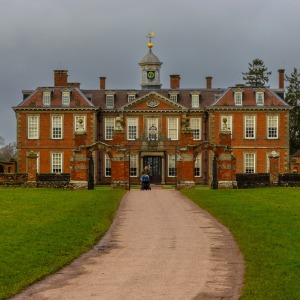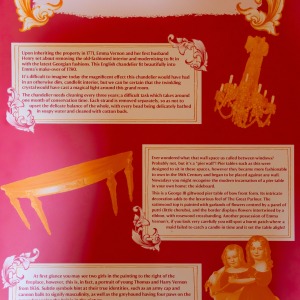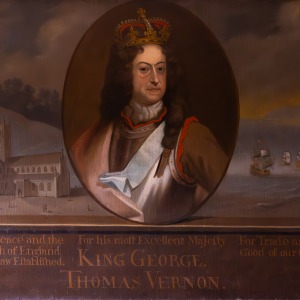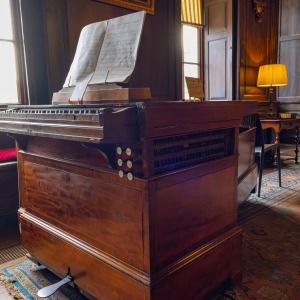National Trust Hanbury Hall
24th January 2024
Our scheduled Tuesday excursion was postponed to Wednesday due to inclement weather, characterized by persistent drizzle. Fortunately, Wednesday brought overcast skies but remained dry, prompting our visit to Hanbury Hall, a National Trust property located near Droitwich. Prior to this visit, we had not explored this estate. Google Maps directed us via by motorways before navigating single-track roads leading to the estate. This last part was scary, necessitating one reversal for an oncoming truck. Luckily, the sparse traffic alleviated any significant inconvenience. It is worth noting that alternative routes, such as a cross-country path from Stratford-Upon-Avon, offer a better approach. This is the way we left Hanbury Hall.
Hanbury Hall, constructed of brick, presents an impressive facade while exhibiting a disordered aspect from its rear vantage point. Within the estate grounds, two adjacent cafes cater for visitors. Additionally, during the summer months, it looked as though a mobile trailer would offer refreshments such as ice cream and coffee.
Originally there were formal gardens, but these were later transformed into Capability Brown style parklands. Now, those original formal gardens have been faithfully recreated by the NT and complement the relaxed later gardens, with orangery, orchards, and walled garden. The estate also still encompasses expansive parkland, offering many walks. The reconstruction of the original gardens was helped by a painting commissioned by the original owner, Thomas Vernon. The painting prominently features Vernon himself overlooking the estate from a high point. It could be thought of as an “18th-century photoshop” creation, because there is no miniature hill overlooking the estate
Within the main hall, a striking staircase adorned with wall murals by the English painter Sir James Thornhill commands attention. Paintings in other rooms, have concealed symbolism; for instance, a portrait featuring a greyhound flanked by two young brothers carries historical significance. The two boys are dressed as girls, but cannon balls and a military hat hint at their masculinity. Painting the two boys as girls, could also perhaps help thwart kidnap attempts. A greyhound denotes that the heir to the estate is present in the painting. Notably, in the case of Hanbury Hall, this symbolism proved prescient – both brothers ultimately assumed ownership of the estate, following the premature demise of the elder sibling without heirs.
Exploring the outdoor environs, we walked around the formal gardens before venturing into the expansive parkland. While we arrived slightly ahead of the full bloom of snowdrops, their imminent shoots promised a picturesque sight upon subsequent visits. The estate’s diligent gardeners were observed preparing the grounds for the forthcoming spring season. A magnificent orchard looked as though it will be a mass of bloom in spring. Among the architectural features, the 18th-century Orangery stands out, housing lemon and orange trees, with many likely to be relocated outdoors during the warmer months.
The primary cafe had a somewhat limited menu comprising sandwiches, jacket potatoes plus a few vegetarian options, with my personal selection being red dal.
Anticipating a broader array of offerings on the menus, a return visit is certainly warranted also to more fully appreciate the splendour of Hanbury Hall, particularly amidst the lush backdrop of trees, formal gardens, and orchards.













































